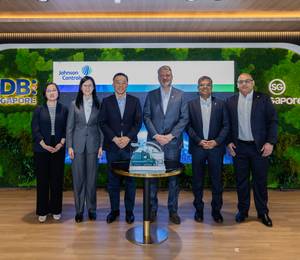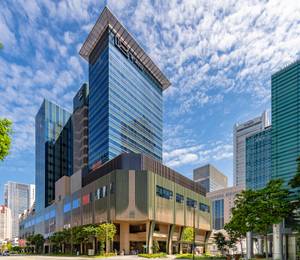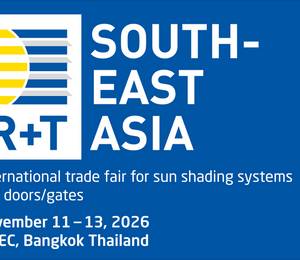Vivien Leong is a registered architect in both Singapore and the UK and has been widely recognised for her outstanding career achievements and contributions to society, named as one of ‘Singapore’s 15 Great Engineers’ and ‘Architects Aged 40 and Under’ by the Singapore Business Review.
Q: Why did you choose to become an architect?
A: Sometimes I think about that. When I was a kid, I wanted to be a busker or some kind of a travelling performer, this might be due to a curiosity about places and people. I also liked making and fixing things more so than playing with toys. These might be qualities I feel are important in an architect, to have a sense of responsibility towards the physical environment and a desire to make it a better place for people.
Q: As the Director of Scott Brownrigg in Singapore, what are your roles and responsibilities?
A: Scott Brownrigg has offices in different parts of the world. Broadly speaking, I look after the Singapore studio, which is responsible for winning and delivering projects locally and in the region. My role is to lead, mentor and grow the practice here, and to ensure our vision aligns with that of our headquarters in London; that we are driven by the same sense of purpose, which is to enrich lives through our work as a design practice. We want to bring about positive impact to the environment and the wider society.
Q: Scott Brownrigg is known both locally and regionally for transportation, data centre, hospitality, and retail projects. What makes the firm a leader in these projects?
A: We work very closely with our UK colleagues. A few years ago, we began to operate as one unified studio, where we look at our practice as a whole and not separated by geography. Our collaborative cross-project, cross-sector and cross-studio approach is a much more effective way to share knowledge and expertise, which keeps us to be ahead of competitors. We are strong in business space, education, defense and life sciences too.
Q: In Singapore, you have been instrumental in leading Tavistock Station – part of the Land Transport Authority’s upcoming Cross Island Line development. Can you share your experience with designing this station?
A: Tavistock Station is the first MRT station in Singapore for Scott Brownrigg. Scott Brownrigg has a strong track record in rail architecture in the UK, particularly in London, so we have been able to tap into this capability, adapting our approaches to the local context.
These projects have such a wide range of interfaces that non transportation projects do not have, and it is extremely rewarding to see the design of the station come together through a multi-disciplinary team of specialists from different disciplines. Much of a station is highly technical in nature, but architects are a very key component as we are almost the only discipline to focus on the human experience, such as how easy it is for commuters to find their way around, and social aspects, such as the placemaking of public spaces around the station and how they are perceived. We are very keen to share our experience in Singapore and the region and hope there are more opportunities to come.
Q: How can transportation and infrastructure projects be sustainable?
A: We have been debating about this in the office – whether transportation projects like an underground station can be considered sustainable from the point of view of the substantial amounts of concrete used. However, this cannot be viewed in isolation as a well-run rail system brings so many other benefits including the reduction of car usage. For example, the Elizabeth Line in London is expected to be carbon neutral from between 9 to 13 years after its opening in 2023, and over its expected 120+ years of operation it will provide long term net savings in carbon.
As well as this, mass rapid transit systems such as those that Tavistock station will serve provide equitable access between the nearby area and the wider city to residents and workers alike. This will provide wider benefits in social mobility, increased prosperity, and opportunities for future developments.

















